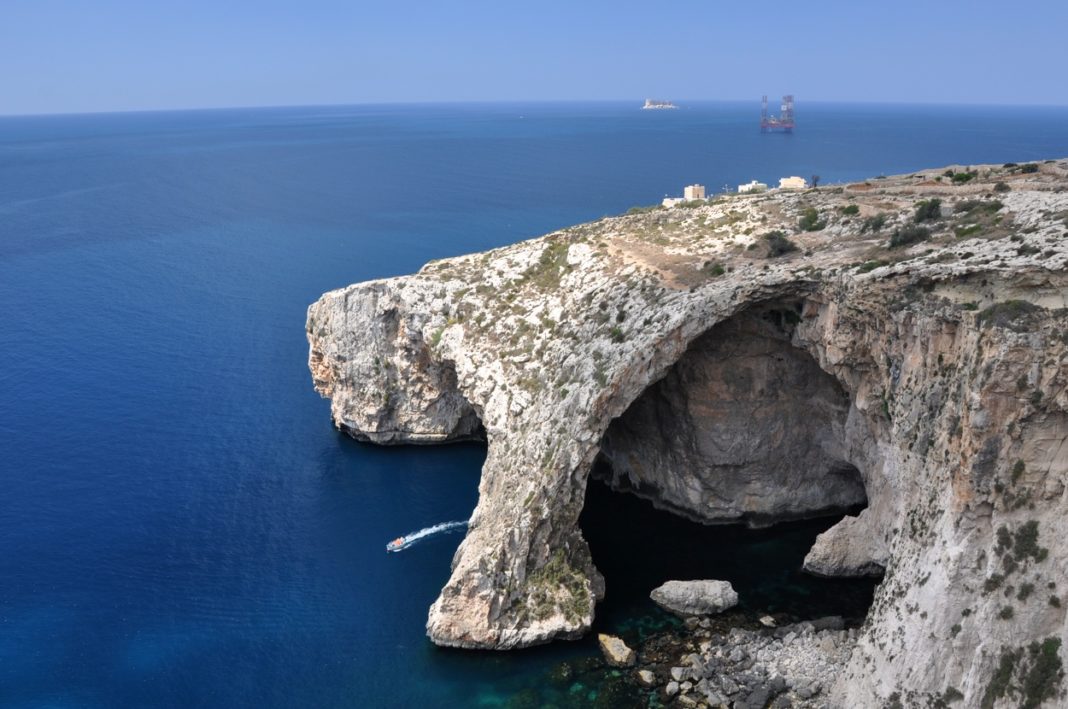The Blue Grotto is a natural sea cave on the side of the mountain, 60 meters long and 25 meters wide, and can only be reached by squeezing through a narrow mouth, two meters wide, at water level. To enter the grotto, visitors must lie flat on the bottom of a small four-person rowboat. The oarsman then uses a metal chain attached to the cave walls to guide the boat inside the grotto.
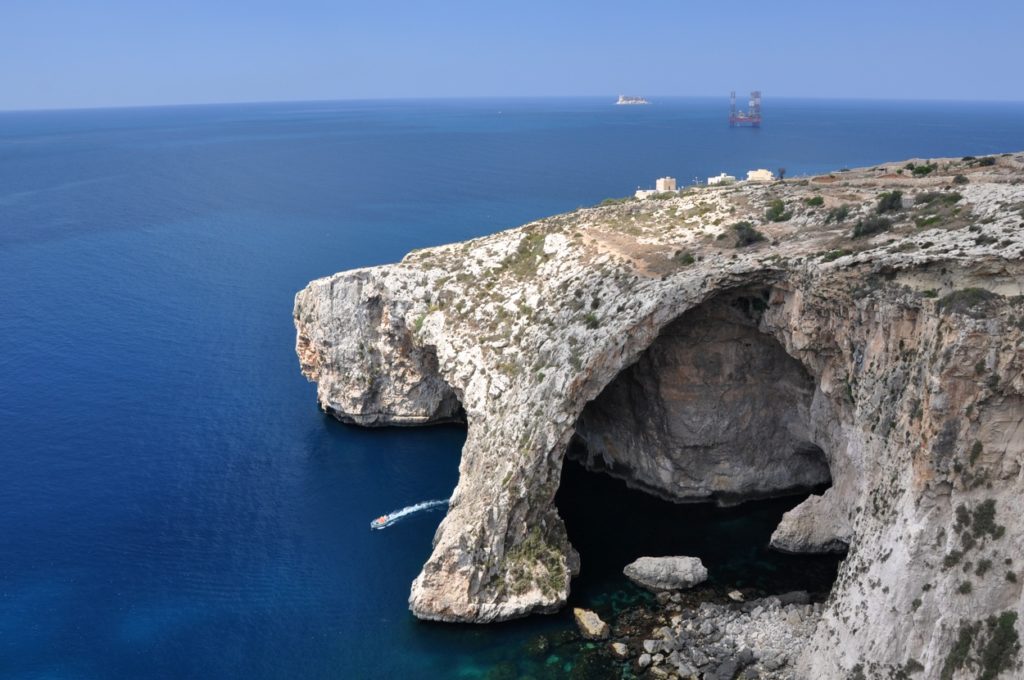
The Blue Grotto is one of several sea caves worldwide that is flooded with brilliant blue or emerald light. The quality and nature of the color in each are determined by their unique combination of depth, breadth, water clarity, and light source.
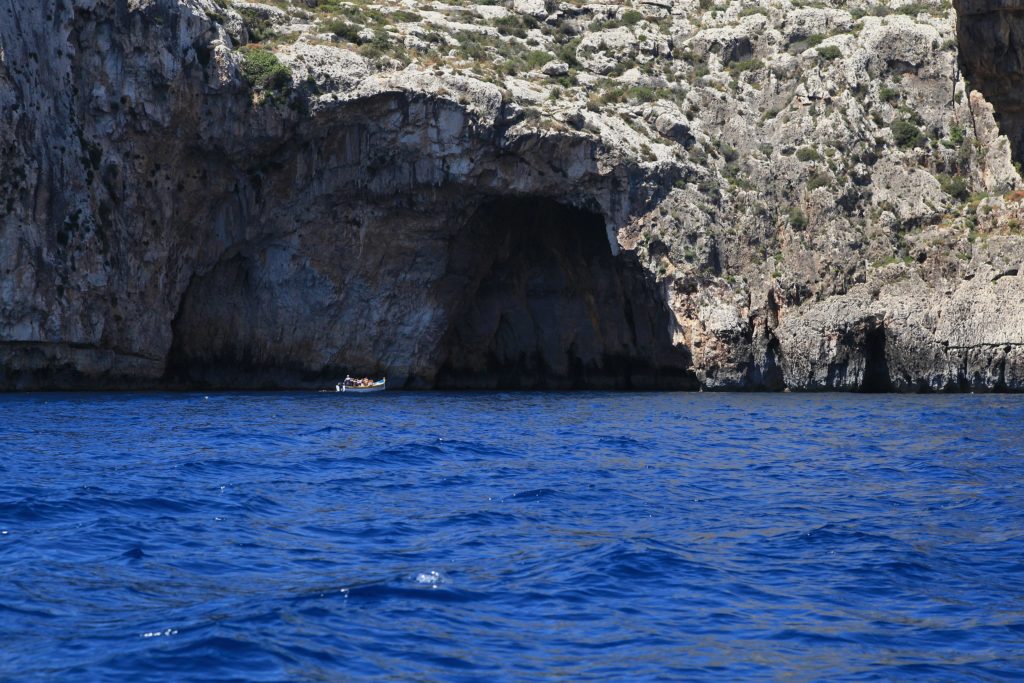
In the case of the Blue Grotto, the light comes from two sources: the narrow-arched entranceway, and an aperture approximately ten times as large directly below it, separated by a band of rock between one and two meters tall. Because it is farther from the surface much less light passes through the lower opening, but its depth and size allow it to be the grotto water’s primary source of illumination.
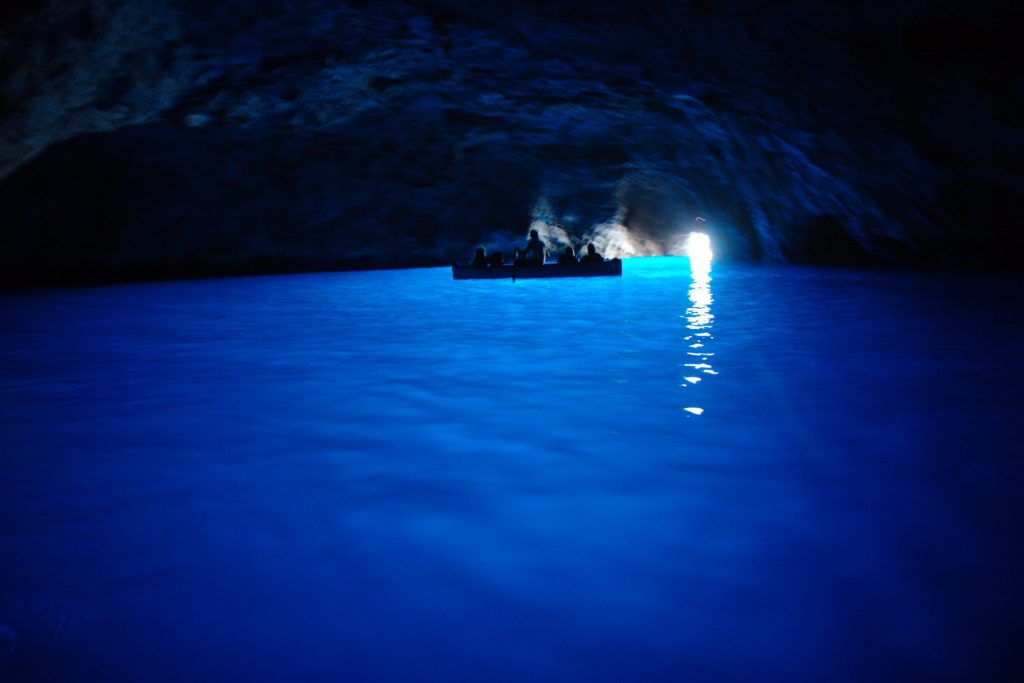
As light passes through the water into the cave, red reflections are filtered out and only blue light enters the cave. Objects placed in the water of the grotto famously appear silver. This is caused by tiny bubbles, which cover the outside of the object when they are placed underwater. The bubbles cause the light to refract differently than it does from the surrounding water and gives off the silver effect.
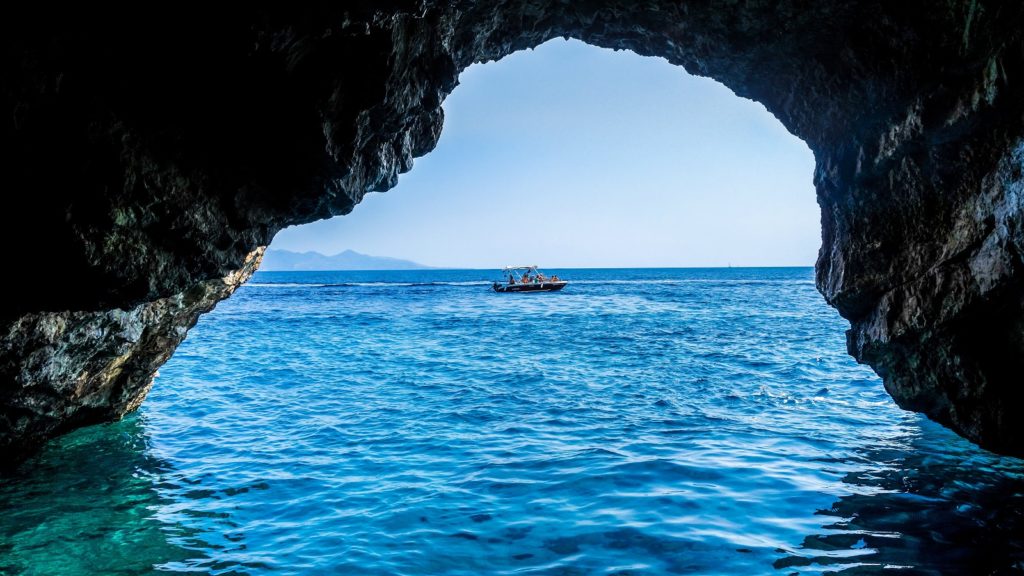
The cave was first known in ancient Rome. It was used as a private swimming pool for the emperor Tiberius. During this period, the cave was decorated with a number of statues. In addition, the edge of the cave is also arranged as a resting place. According to experts, there are 4 statues lying at the bottom of the cave.
According to Wikipedia





